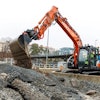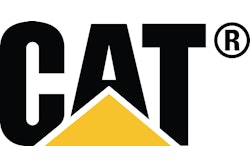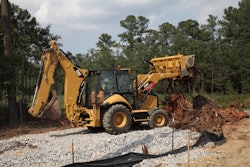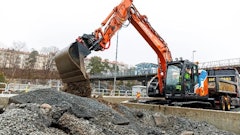Caterpillar recently acknowledged a setback in its drive to expand its China business with its announcement of a $580 million write down that represents 83% of its investment in a Chinese company known as Siwei located in Zhengzhou, China. The non-cash goodwill write down cost Caterpillar $0.87 per share in the 2012 fourth quarter and a missed earnings forecast.
Caterpillar management claims it "uncovered deliberate, multi-year, coordinated accounting misconduct concealed at Siwei beginning several years prior to Caterpillar's acquisition of the company." Caterpillar removed several senior managers at Siwei who were responsible for the misconduct. Caterpillar also announced the departure of Luis DeLeon, a company vice president, one of the few senior managers who stayed when it acquired Bucyrus International. The company has not indicated that DeLeon's departure was related to the Siwei deal, but the announcement about him was coincident with their disclosure. Caterpillar management has implied it will take legal action to recover some or all of its lost investment and has notified the Hong Kong Securities and Futures Commission of its problem.
The history of Siwei is interesting. In November of 2011, Caterpillar acquired ERA, a publicly traded company on the Hong Kong Stock Exchange, in a friendly takeover. ERA, through its wholly-owned subsidiary Siwei, designs, manufactures, sells and supports underground coal mining equipment in China. Siwei has a 600,000 square meter manufacturing plant in Zhengzhou, Henan Province, and employs approximately 4,000 people. Caterpillar intends to continue manufacturing Siwei roof support equipment to serve underground mining customers in China.
ERA Holdings was an inactive publicly traded company on the Hong Kong stock exchange. ERA was at least partly owned by Rubo Li and Emory Williams Jr. when it began acquiring Chinese mining equipment businesses. The inactive public company became active in what is referred to as a reverse merger, which eliminated the need to file and go through the expensive process of an IPO. In the filing ERA apparently reported a large number of related-party loans made to officers Li and Williams, that would normally have raised red flags when a company such as Caterpillar does its due diligence. In addition to the related party transaction, Li and Williams owned a portion of International Mining Machinery (IMM), a company that competed with ERA (Siwei) and also manufactured underground coal mining equipment. IMM was sold to Joy Global for approximately $450 million. There are some on Wall Street who believe Joy will eventually write down its investment.
Meanwhile, Reuters reported that Emory Williams Jr. said in a statement, "We were shocked and dismayed to learn, from press reports, about the very significant goodwill impairment that Caterpillar is taking in relation to the acquisition of ERA's subsidiary Siwei."
We speculate that Caterpillar management suspected there were problems with the ERA acquisition sometime in the early part of its 2012 fourth quarter. The problems may have precipitated the transfer of responsibility for the construction segment to Ed Rapp, group president and former Chief Financial Officer for the Construction segment, and his move to Singapore. Rapp's appointment to the position was announced in mid-October 2012. One industry observer pointed out that the recent announcement about Siwei was very carefully choreographed and made on the Friday before a long holiday weekend when the company was in a "quiet" period just before the release of its quarterly earnings report and therefore could not comment on the incident.
This is not the first time Caterpillar has had to resolve issues with Chinese companies. In early 2010, the company purchased the 15% that it did not already own of its hydraulic excavator manufacturing joint-venture assets from XCMG for $92 million, ending its 16-year JV. Negotiations to unwind the joint venture took years and were rumored to be very contentious.
The adage, Caveat Emptor (Buyer Beware), is more appropriate in China than anywhere else. The Chinese political system is alien to most Westerners who are use to a democratic government and a transparent system where individuals and corporations have the right to resolve conflicts legally. In the West publicly-traded companies are all required to meet the same accounting standards.
Westerners believe that Adam Smith's (the noted English economist) "invisible hand" decides what brands and products will make it in the marketplace. In China, the invisible hand of the market has been replaced by the heavy hand of the government's central committee. An elite group of Chinese leaders decide in what direction the country should head. The government celebrated sixty years in power in 2011. The country is half way through its twelfth five-year plan. Every ten years control of the central committee that elects the president and premier changes. In late 2012, a new president, 59 year old Xi Jinping, was chosen by committee members. Once new leaders and a new plan are set, everyone and every company marches to the same drummer, so to speak, including the machinery manufacturers.
In its most recent five year plan, Chinese government officials decided that the country should reduce its dependence on Western manufacturers for large electric drive mining trucks. China produces the majority of its electricity at coal-fired power plants and the government feels a strategic need to be able to produce that coal with Chinese-built equipment. At the BICES show in Beijing in October 2011, no less than five Chinese manufacturers introduced mining trucks that were mostly under 100 tons capacity. At the recent Bauma China show in November 2012, Sany and XCMG both introduced 400 ton capacity electric drive mining trucks.
The allure of China is its people and the future demand they will create for goods and services. The country is home to one third of the world's human beings. The government is trying to urbanize this largely agrarian population.
The Chinese government is moving the country toward a market economy, but the current top-down system has created a crony-capitalism environment. Favoritism among city, state and national government leaders is rampant. The challenge for president Xi will be to make the system more transparent. In one of his early speeches, Mr. Xi said one of his first priorities would be to reduce or eliminate corruption among officials.
Caterpillar is not alone in its China problems. Deere was highlighted in a June 2011 China Daily article, published in Beijing, China. The English language newspaper wrote an unusual article about problems between Deere and its joint venture partner Xuzhou Bohui Construction Machinery Group. The joint venture was named XCG and operated a hydraulic excavator plant in the city of Xuzhou. The article, entitled "Joint Ventures Off On A Rocky Road," was unusual in that it was not a balanced article and strongly favored the Chinese partner, which made the truth of the dispute hard to discern. In addition to the article and there were conflicting accounts on blogs. There had been rumors that the venture was not going well. Back in 2007, before it became a joint venture, XCG sold 500 excavators. Sales stayed flat the next few years. After the JV was set up only 512 excavators were sold in 2008; in 2009, it was 440; and in 2010, only 650. The JV had missed the opportunity to cash in on the huge increase in China sales.
Xuzhou Bohui accused Deere of entering the JV to acquire its intellectual property rights and know-how. The accusation seemed to us to be a stretch. Our guess is Deere's technology was far ahead of Xuzhou Bohui's, if for no other reason than Deere has been in a long term JV in the U.S. with Hitachi to build hydraulic excavators. Most industry observers would say that Hitachi is one of the top technology leaders when it comes to excavators.
The dispute appeared to center around a struggle for control of the business. In September 2009, one year after the joint venture deal was signed in 2008, John Deere said it wanted a controlling stake. Xuzhou Bohui turned down the offer, and after that, Deere tried various other ways to get a controlling stake. Then, according to Xuzhou Bohui management, when production capacity could not meet the growing market demand, the two parties agreed to contribute a third round of capital at a board meeting in November 2009 to expand production. In the midst of the capital infusion, Deere said it wanted to put another director on the board, thereby guaranteeing Deere boardroom control. Xuzhou Bohui wouldn't agree to the deal, so the capital flow dried up and the expansion plan ground to a halt. Deere tried to buy out the JV from Xuzhou Bohui, but a dispute arose over the value of the assets. We believe the dispute also centered on whether the JV excavators could be sold worldwide. Xuzhou Bohui wanted to sell them throughout the world while Deere wanted to restrict their sale to certain countries so that it would not violate its agreement with Hitachi in the Americas region.
The dispute was settled quietly. There has been no mention of it by Deere or by Xuzhou Bohui. Deere moved on and has invested approximately $380 million in Tianjin, a Northern China province, where it is building a facility to manufacture diesel engines, wheel loaders and hydraulic excavators. The company has been building agricultural products in Tianjin since 2005. The products will be sold in China and other countries in the Asia region.
Operating a business in China is fraught with problems. For the uninitiated there are two ways companies can participate. One is to find and work with local Chinese partners. Selecting a partner may be as difficult as trying to go it alone. The second way is networking with other Western companies that are already doing business in China. Networking is probably the best way to start establishing a China venture. Industry associations such as the Association of Equipment Manufacturers (AEM) are a good place to network. The U.S. State Department, The Import/Export Bank and the World Bank can all offer good advice as well.


















